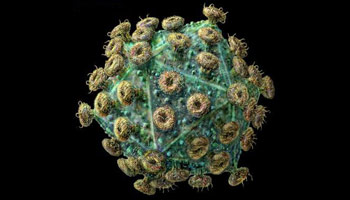I recently attended the HIV seminars at the Infectious Disease Society of America meeting in Philadelphia. This is one of the meetings where the infectious disease physicians go to get updates as well as others interested in the field, especially the HIV specialists. There were 3 and a half days of nearly constant sessions explaining the latest findings and ways to manage patients. Here are some of the highlights.
 NEW INFECTIONS
NEW INFECTIONS
Still those of African and Hispanic descent and females are dominating the new cases of HIV. Young people and older people are not paying attention and continue to catch HIV.
RESISTANCE
If a person misses medications then their virus can change to be resistant to the medications and other, less desirable medication combinations may be helpful. Unprotected sex or needle sharing continue to introduce resistant viruses in well-controlled patients and that makes a medication change necessary, and again the results frequently are less than desirable than the first combination.
The 3 new medications: raltegravir, etravirine, and maraviroc continue to help those with resistance, but without having at least 2 very effective medications in the mix, they are probablydoomed to fail too. Many have failed even these and are waiting to either get new medications which are not coming soon, or waiting todie.
The interpretation of resistance tests is a lot of work and takes special expertise, but gives a greater chance of the next medication combination of being successful.
CHILDREN
There are only around 200 births in the USA of HIV+ infants per year. This is still an amazingly low number, an accomplishment of all the researchers and specialists. These come from mothers who did not go to their prenatal visits and have an HIV test earlier so that preventive measures could be started. So the number of children below sexual maturity age with HIV is very low.
TEENS
Continue to be a problem. Many of them rebel, prefering a fantasy world where they can forget about their HIV, and then they suffer and many times die. Those who work with them are trying their best to reach into their world and relate to them. Many don’t become responsible adults till age 25 or later. By then they have much medication resistance.
HIV AND AGING
In a few years, over 50% of the new HIV patients may be over 50 years old. The younger ones are surviving longer due to better medications, strategies, and medical provider skills so they are aging and entering this category. In addition the treatment of many diseases of those in the US are also more effective. So we have those getting older who already have HIV and those who are older without HIV having sex with HIV positive people. Erectile dysfunction treatments may be partially to blame; they have been available and are widely used causing more sexual activity in this age group than before. The downside is that this results in more HIV positive patients in this older group.
PREVENTION
Besides (ABC) Abstinence, Be faithful and monogamous, Condoms (ABC) there is still experimentation on female use of topicals which may prevent transmission. Circumcision is expensive and painful but it lowers transmission risk some.
THE DEVELOPING WORLD
Many are doing well on the medications as those in the USA did in the early years of triple therapy, 1996 on. They are getting higher numbers controlled than the USA has due to better adherence. We hope the honeymoon period lasts long.
The most common combination is stavudine-nevirapine-lamivudine in a single, cheap tablet. But the stavudine is causing lipodystrophy so substitutions are being prepared. Now some patients have resistance and there are problems with not catching it early enough without having a viral load test readily available. If not caught early more resistance happens. Resistance tests are not readily available too which can direct the specialist to the medication with the best chance to work.
HISTORY
We saw a documentary film on the heroes who stepped up to fight in the early days. Some of them have died of HIV or other causes. I look at the leaders I have respected and learned from over the 21 years and they look much older. I can’t understand why I still look so young!
HIV and TUBERCULOSIS
We learned how each of these makes the other worse and how to treat them better as a unit. Many, many die of this in the developing world.
Good news! There hasn’t been a new TB drug in about 40 years and several new prospects look like they will help. They are from new classes, so sister compounds can be made and tested in the future also
STRATEGIES FOR DIFFICULT PROBLEMS
This was a discussion giving us ideas on how to manage those few patients with difficult problems such as those who have had HIV for more than 15 years and have burned through many medications by missing doses and appointments.
NEW GUIDELINES
This was a discussion by some experts who helped craft the latest guidelines that help us front-line HIV specialists. Some older medications were moved lower on the list of preferred medications to be replaced by some of the new ones based on good clinical trial information. The recommendations are based on the strength of the research proving the strategy and on expert opinions also when there isn’t much clinical data.
In addition to reinforcing much that I know, I learned a lot of new facts and strategies.
Don’t forget to send in your questions.


